Corn is one of those plants that many take for granted. Its diverse nature and buddy growing capabilities make it an important foundational pillar of many farming ecosystems. We prepare and consume it and feed it to animals which we go on to prepare and consume.
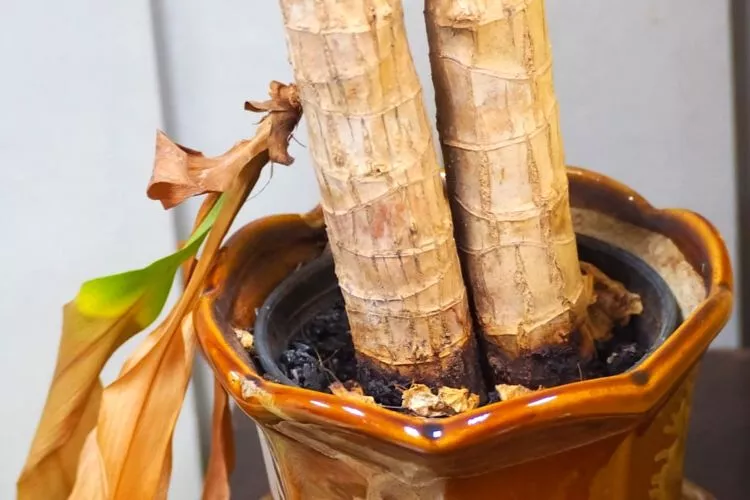
Furthermore, there are even growing methods such as the ‘Three Sisters’ that the Indian tribes use(d) that utilize corn due to its large role in nurturing other specific crops during growth. When corn dies for whatever reason, the surrounding plants can also suffer.
The main reasons for their losing lives include poor soil composition, inadequate spacing, and lack of sunlight, to name a few. Thankfully, learning to read the signs is the easiest way to fix them. In this article, we’ll go through all the reasons why a corn plant may be dying, how to save them, and some general maintenance tips. Sound good? Let’s go!
Table of Contents
Identify the causes of the dying corn plant
When any plant is stressed, it will present some kind of visual or physical signature. This helps us as growers to be able to distinguish what the issue may be.
When it comes to corn, there are a handful of reasons why they can die. The key to saving them is distinguishing the root cause. Let’s look at every possible reason that can cause a corn plant to become weak and suffer from its injuries before going through the detailed guide on how to save a dying corn plant.
Poor soil quality or nutrient deficiency
One of the biggest problems with growing many crops is how their soil is prepared; corn is no different. Soil composition is crucial to corn’s survival because they rely heavily on a decent amount of nitrogen during their initial stages of growth.
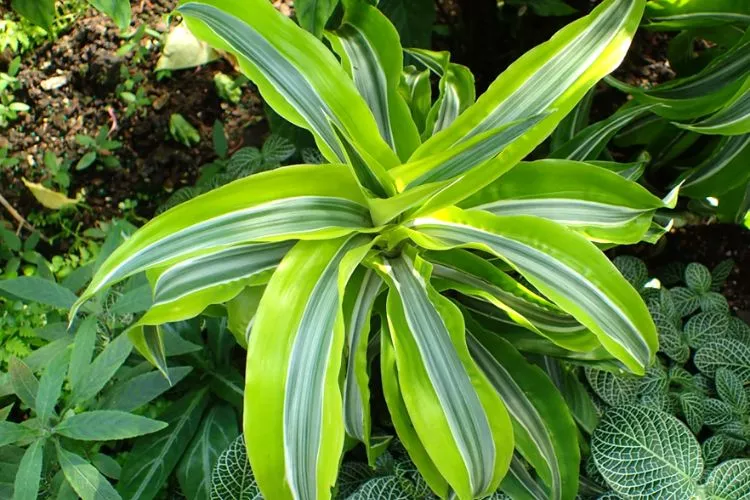
The abundance of nutrients early on allows the crop to establish its roots and grow a stable stem, and the required leafy foliage. When a crop such as corn doesn’t have everything it needs to grow, it may make a start but will most likely suffer from stunting and other growth deformities.
Additionally, corn needs a well-draining, organically fertilized soil bed with materials such as compost or aged manure added to encourage beneficial organisms. Poorly draining soil that lacks ration can restrict oxygen from getting to the roots.
It may also cause a pooling trap when too much water is applied without having anywhere to drain. As a result, debilitating diseases such as root rot can occur. The older leaves will turn pale to yellowish green and, later in the season, will reveal a faded ‘V’ shape as the deficiency wears on.
Lack of water or improper watering techniques
When too little water is present, any nutrients added or already present won’t be able to dissolve. This will cause the plant’s growth to slow down dramatically and eventually kill it. It simply won’t have enough of what it needs to photosynthesize.
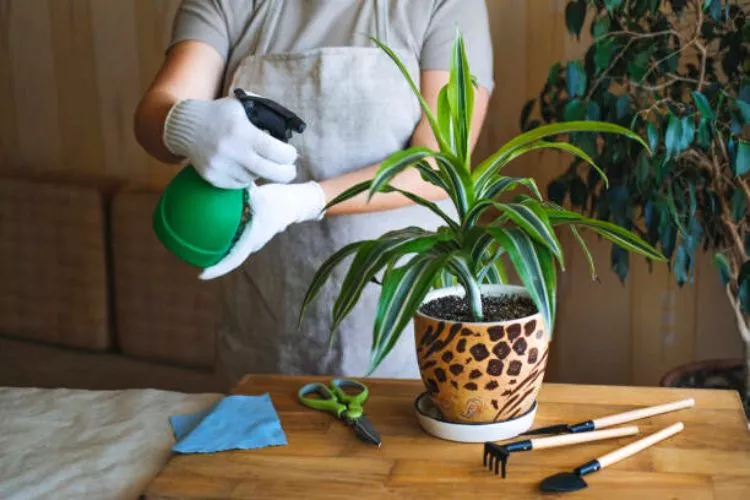
When too much water is applied, the excess moisture reduces nutrient uptake and causes pollination failure. As a result, the potential of yield significantly decreases also. Corn doesn’t mind a bit of a drink; drowning them can cause issues with rotting roots, so a specific watering technique is required.
When these factors occur, the leaves will curl inwards to protect themselves from the lack of moisture. You may even notice lighter kernels and fewer of them.
Pests or diseases
When it comes to pests, corn has a pretty handy chemical defense mechanism to help ward off some predators. They produce a carbohydrate called callose which helps by sealing the cell openings to prevent pests such as aphids from sucking them dry of sap.
When the sap is exposed, other nasties make their way in to feed and leach the life out of the corn plants. Some other common intruders include the Chinch bug, Corn leaf aphid, Corn rootworm, Cutworms, Thrips, White grub, and Wireworms.
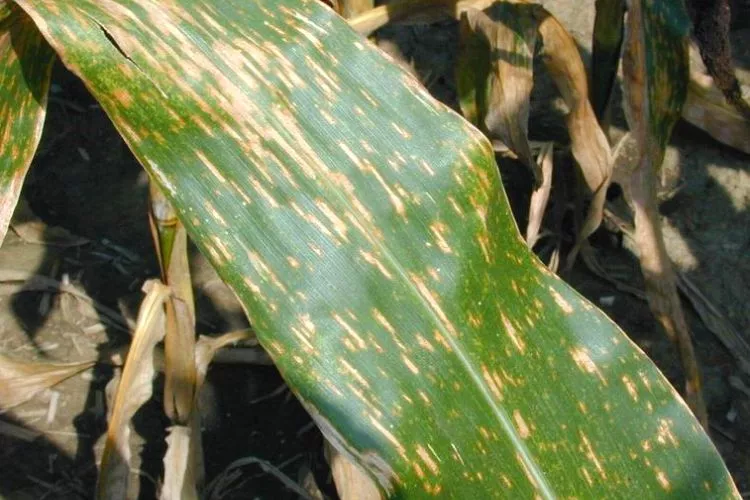
Corn has to navigate a few different diseases throughout their growing seasons. They include gray leaf spots, northern corn leaf blight, tar spots, and common and southern rust. Gray leaf, Northern corn leaf, and tar spot are caused by wayward spores splashing around during and after the wet seasons begin to dry out.
The rust diseases attach themselves in varying conditions, some cold and wet, some extremely hot and humid. The longer they are left undiscovered and unattended with all diseases, the more damaging and deadly they can become.
You will notice varying-sized bite marks, leaking stems, and discoloring when pests destroy your corn crop. On the other hand, diseases will reveal rust-like spots, burnt edged leaves, discoloring, and overall stunted growth.
Overcrowding or improper spacing
When corn crops are planted too close together, they produce much smaller cobs. 12-16 inches (30-40cm) is about the optimal amount of spacing. It’s also recommended to plant in blocks or 4-6 plants instead of straight rows to ensure pollination occurs.
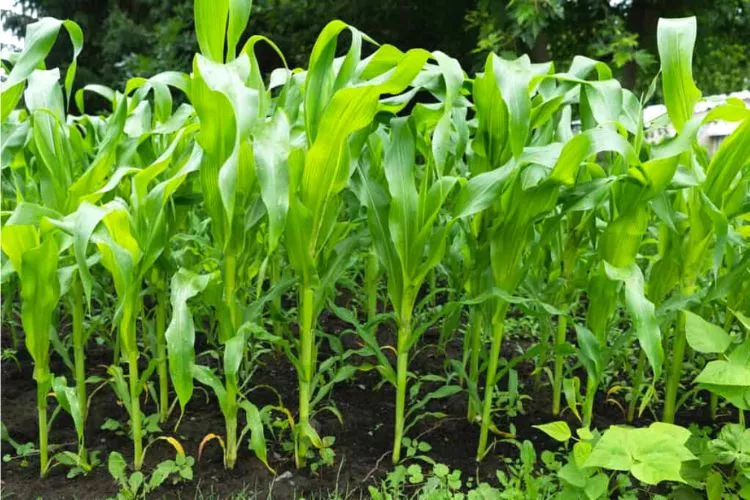
Otherwise, you may end up with a nonflowering/fruiting corn crop. Additionally, when these large rooted plants are grown too close to each other, they steal the nutrients from their neighboring plant. Meaning only the strongest crop will survive, and the rest will perish.
Lack of Proper Sunlight
Sunlight is one of, if not the most important factor in growing nearly every single plant species. The fact that corn grows to become a tall, lush foliage type of crop means that it needs an abundance of sunlight to thrive. Without it, it simply won’t be able to photosynthesize, which leads to stunting and eventual death due to a build up of nutrients and water.
How to save a dying corn plant?
Reading the signs of a dying corn plant will allow you to put a plan together to bring it back to life. A range of alterations can be made to help save a dying corn crop. The simplest actions you can take without causing any extra stress include:
1. Cut off or prune the dead part
If you notice any decaying or dead leaves on your corn, removing them will allow the plant to refocus its energy on regenerating the rest of the plant to better health.
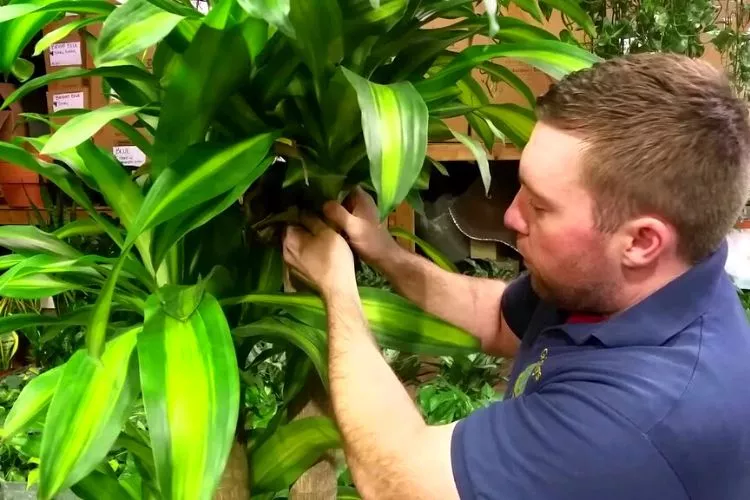
The foliage of a corn plant is usually pretty brittle and can either be pulled with some force or pruned at the node with a sterile pair of gardening shears or scissors. Make sure you discard any dead foliage with care so any potential pests or diseases can’t spread further.
2. Repot the corn plant if need be
If you’re growing your corn in a pot, correcting its root cause can usually be done with a simple report. Simply pull the plant up, check the root system’s condition, and prune away anything that looks like it can’t be revived (black and mushy roots).
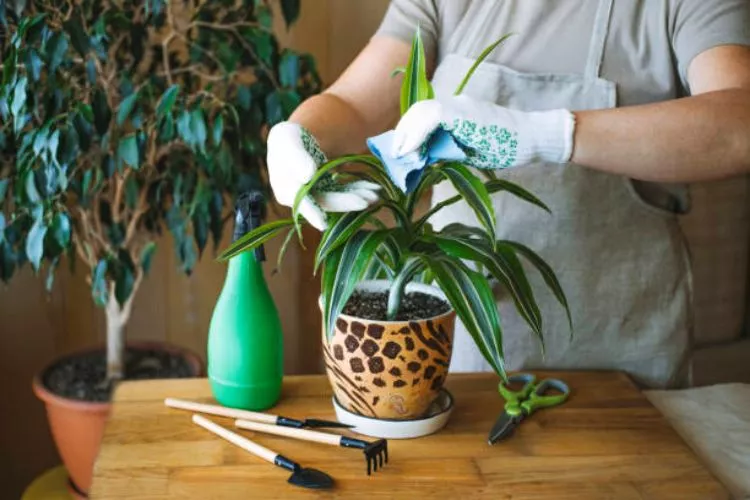
Apply some new soil that is loamy when seeding and clay/silt during later growth stages. Try to get the pH to around 5.8 to 6.2 to ensure they can thrive. Avoid a pH lower than this level, as it will cause severe health issues to the plant.
3. Water the plant regularly in ideal quantity
Many factors can affect the amount and frequency of water a corn plant requires. These include planting date, planting density, maturity group, location, and weather conditions. With that in mind, corn usually needs between 0.15 and 0.20 inches of water per day.
This requires a regular schedule. The best times of day to do so are early in the morning or late in the evening when the sun’s bite is at its weakest. This will allow the water to soak in without drying up too quickly.
4. Ensure the soil moisture levels are correct
Corn plants don’t mind a bit of moisture. However, they should never become completely soaked. Excess soil moisture can reduce the plant’s ability to absorb nutrients, so it’s always worth checking the soil moisture content once the watering is complete.
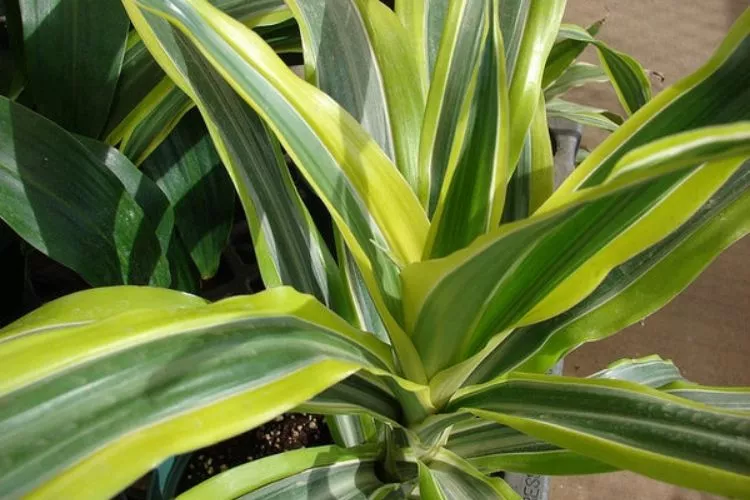
The rule of thumb suggests that they should receive their desired amount and be allowed to dry out before watering again. This will ensure that no water is trapped or pools around the roots, causing any issues with rot, etc.
5. Improve the soil quality by adding compost or fertilizers specific to corn plants
Soil composition during preparation is one of the most important factors in growing a decent crop of corn. Corn can grow in a range of soil types; however, mixing in some good quality organic matter, such as compost or rotting manure, can add that extra layer of nutrients that are hard to come by otherwise.
Furthermore, blending fertilizer with a 16-16-8 balance is ideal for adding that extra layer of valuable food for growing crops. (16% nitrogen, 16% phosphate, and 8% potassium)
6. Remove any pests or diseases using appropriate methods, such as pesticides or natural remedies
Pests and/or disease are not a welcomed combination when growing taller, lusher plants such as corn. Some can be removed by using an organic pesticide such as neem oil or a chemical based glyphosate spray. Others can be picked off or sprayed with soapy water, and the affected areas treated with rubbing alcohol.
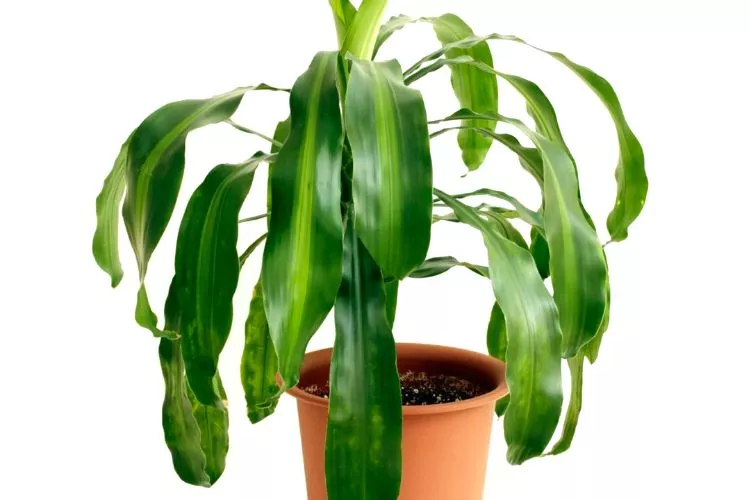
We recommend using natural fungicides where possible and have seen great results with varying types of baking soda. Simply mix 1 gallon of warm water with 3 Tablespoons of Baking Soda in a spray bottle and spray on the affected areas. For unrecoverable cases, the best course of action is to prune away any dead or decaying limbs and discard them carefully.
7. Place the plants in a location with enough sun exposure
Optimal spacing and sun exposure cannot and should not be ignored. How corn grows needs space to allow the roots room to anchor the plant and then utilize the sun to grow tall and proud. Without these 2 environmental and preparedness conditions, the plant will not grow to its full potential.
8. Thin out the plants if they are overcrowded or move the plant to a new location with more space
One thing to avoid when preparing and placing corn is overcrowding. Corn needs sunlight and space to grow. Without it, they will become stunted and die. Aim to trim any overgrowing leaves or stems when they cross into the neighboring plants ’grow space.
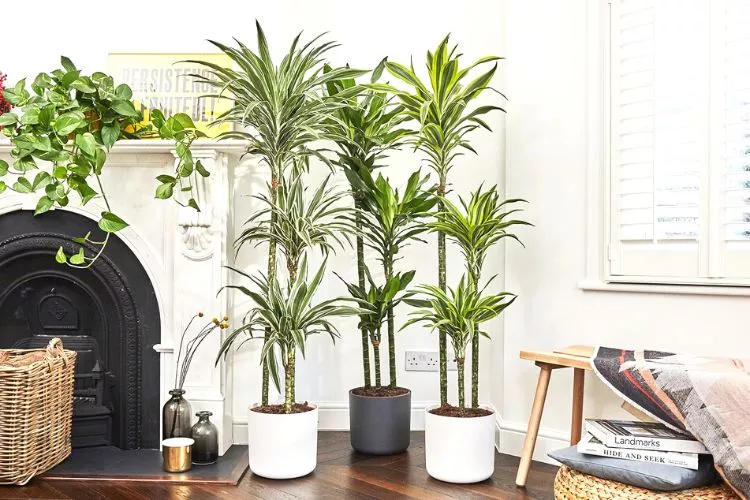
If it’s impossible to reshape your corn, relocate it if possible. It may even be worth growing your corn in containers so that they can be easily maneuvered around when these problems occur.
What Are the Symptoms of a Dying Corn plant?
When a corn plant is in its early stages of dying, it usually presents several symptoms. This is essentially their last ‘cry for help,’ and it’s our job to watch for these signs to ensure they don’t go too far down so that they can’t be revived. So, observing is far better option than knowing how to save a dying corn plant.
When you notice any of the following characteristic changes in your corn plant, it’s recommended that you investigate and intervene to assist them back to health.
1. Yellowing leaves
When the leaves of a corn crop start turning yellow, it’s usually very early about how stressed it may be. Discoloring usually begins with lighter colors.
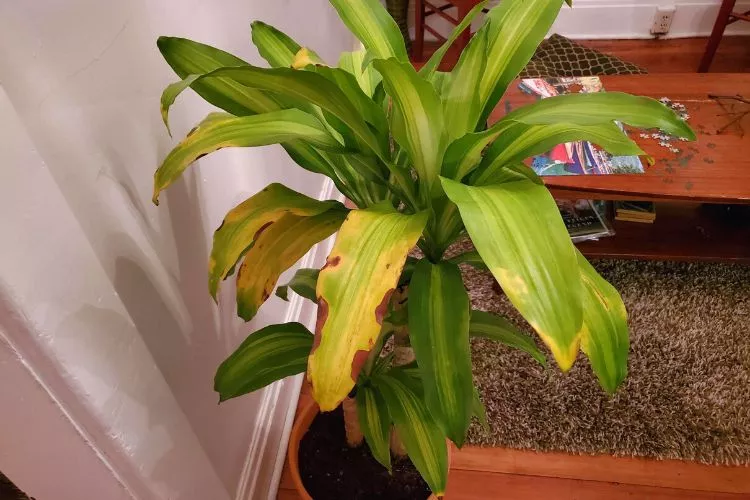
These include yellow, pale white, or faded green before darkening to reds, browns, and black. At this stage, the stressor has begun to take control of the plant.
2. Stunted growth
Stunted growth usually occurs when too much or too little water is present. Both amounts of water don’t allow the nutrients to be dissolved properly, which means that the plant simply doesn’t receive the food required to grow effectively. Stunting can include:
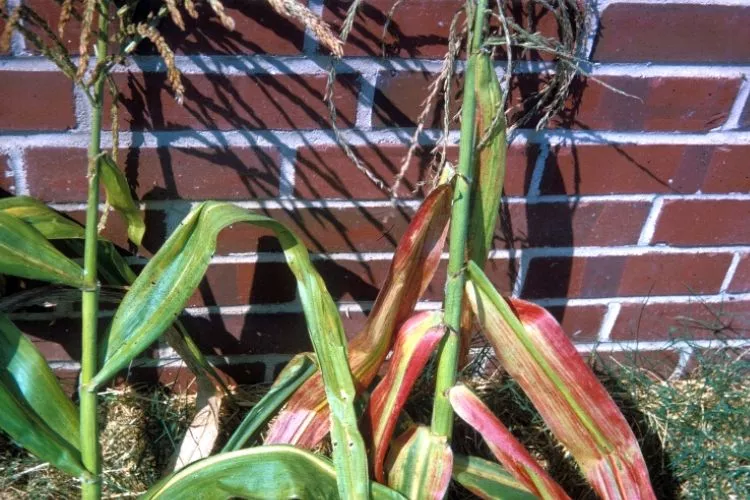
- Smaller cobs.
- Fewer cobs in their clusters.
- Overall shorter plants with minimal foliage.
When a plant loses its ability to grow, it will die due to poorly structured and proportioned roots, stems, and foliage.
3. Lack of new growth
If you notice your corn plants growing for a while and then stopping altogether, they could suffer from a range of stressors. They could be trying to defend themselves with so much of their energy that they simply can’t continue to grow. As the energy wears out, the plant becomes weak and dies when it can’t support itself anymore.
4. Poor root system
Poor root systems evolve when the soil composition isn’t right for the plant. For example, when a plant that requires adequate drainage and aeration is planted in clay, the roots won’t be strong enough to bust through the clay to assist with anchoring the plant.
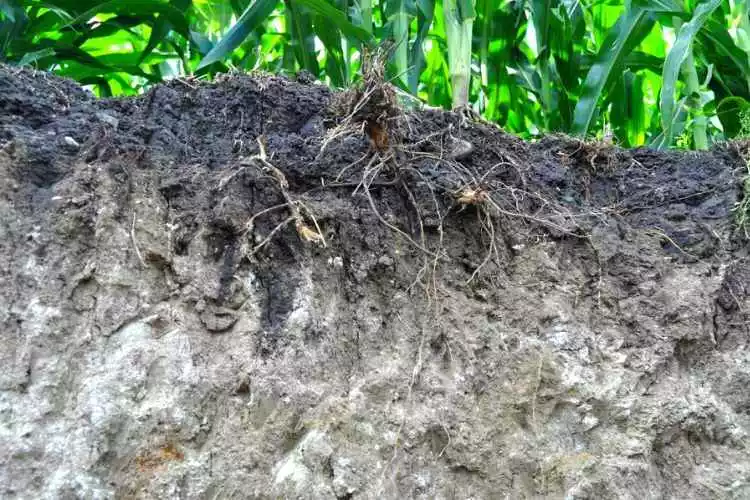
Therefore, becoming weakened and unstable. This is why soil composition is one of the most important factors of plant growth. It sets up the whole plant’s life. Corn is no different; once the root system has no chance of establishing itself properly, the plant will die due to instability.
It will attempt to grow, but it will become too top heavy and fall over. When a root system isn’t growing as it should, you may notice the soil starting to smell as it slowly rot.
5. Presence of pests or diseases
Surprisingly, a lot of plants are resistant to pests and diseases. It’s more the varying outside factors that attract them. Domino effects such as poor soil, overwatering, root rot, and pests dining out on the roots and stem make growing any plant difficult.
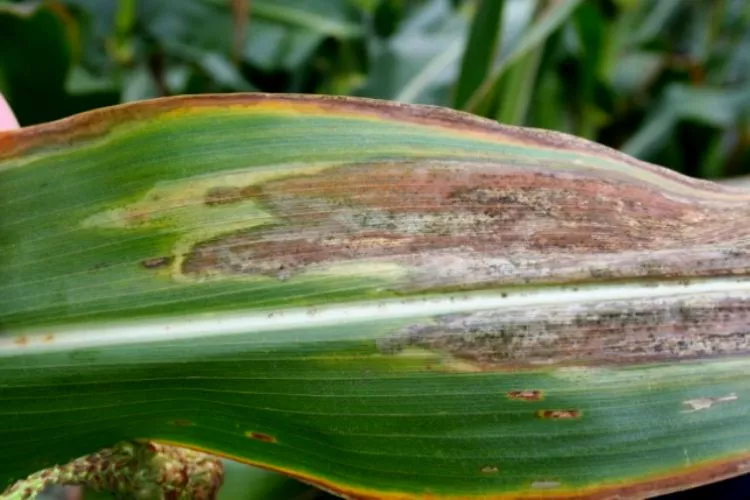
However, when these worrying factors are present, the plant is more than likely suffering badly from its inflicting wounds. If this is the case, action must be taken before it’s too late. When pests or diseases are present, you will notice a range of small bite marks, discolored scars, rotting roots, and decaying limbs.
Additional Tips for Long-term care for a healthy corn plant
Growing corn isn’t all doom and gloom; they are quite a joy to watch as they climb and spread. This article aims to show the importance of understanding the signs and symptoms of a dying corn plant.
As long as they are closely monitored, the plant is otherwise pretty self sufficient. Let’s look at some tips you can follow to ensure that your corn crops live a long and healthy life.
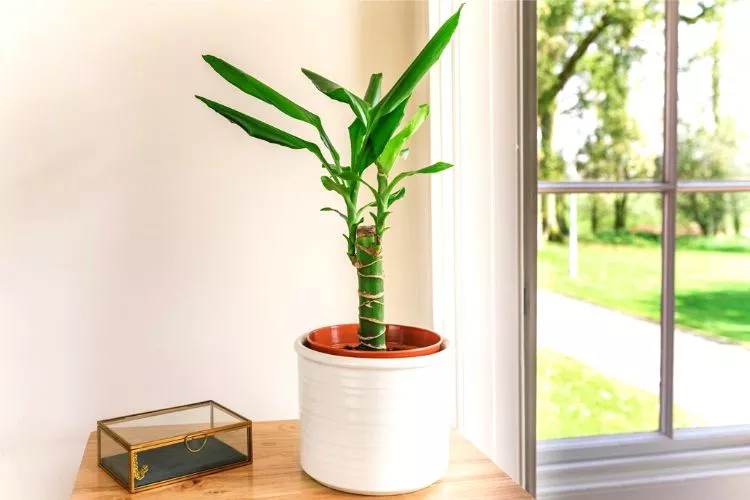
Regularly water and fertilize the plant according to its needs
Corn plants are quite welcoming to receiving moisture. It’s recommended that they are watered regularly in short sharp bursts to keep the soil moist without flooding it out. They need around 1 inch per week but spread out. The best method is either a soaker hose or a drip irrigation system.
Corn can be fertilized once a month during the spring and summer and cut back to one or twice during the whole winter season. The amount and frequency largely depend on its growing conditions. These include the number of crops, area size, planned size per crop, spacing, etc.
Monitor for pests and diseases and take preventive measures
Keeping an eye on predators such as insects and bugs can be tricky. However, using organic pesticides can help mitigate any potential infestations before they get out of hand. A lot of the larger pests can be picked off by hand and discarded properly to save any more damage from being caused.
Diseases can be controlled using the right fungicides at the right times. Many diseases are a result of poor plant management. For example, the debilitating root rot evolves from overeating and poor soil composition. In cases such as this, simply making a few adjustments when planting your corn can help rule out these problems later on.
This generally involves mixing a good quality compost or rotted manure into your initial bed to help nourish the plant early on.
Ensure the plant has proper sunlight and ventilation
Corn needs lots of sunlight to climb and thrive, so making sure that it is planted in a sunlit open area is optimal. No excuses, they need at least 6-8 hours of full direct sunlight. Furthermore, they need protection from high winds. This will ensure that the corn doesn’t become floppy and limp.
When it comes to ventilation, corn plants need a decent amount of space to allow them to release their water vapor. Corn contains around 80% water during its vegetative stage, and if they aren’t given the space to dissipate, it can form a range of spore diseases and invite unwanted pests. They generally require at least 8-10 inches between each plant for optimal ventilation.
You May Also Find Useful: How To Save A Dying Ficus Tree | How To Save A Dying Dracaena Plant
Frequently Asked Questions (FAQs)
Should you cut dead leaves off corn plants?
Removing dead leaves from a corn plant is highly beneficial to its overall health. Simple maintenance, such as pruning, will help the plant to regenerate new growth much faster. It will stop the plant from focusing energy on keeping the dead leaves alive and instead force it to focus on fresh, new growth.
Do corn plant leaves grow back?
The leaves of corn plants grow back pretty fast when trimmed back. You can cut off the top 6-10 inches without any problems. If anything, they thrive much better with maintenance style pruning. It allows them to refocus their energy on new growth.
Can corn stalks be saved?
Once the corn is grown and harvested, the stalks cannot be used again for the next season. Farmers bale the leftover stalks and use them as a good source of roughage for cattle. They can also be used as bedding for farm animals.
Conclusion:
When a corn plant succumbs to the hands of one of its various possible stressors, there is a very real chance that it can die. The best way to prevent this is by learning to understand what to look for and how to correct the problem as soon as it arises. The greatest threats include poor soil composition, unsustainable water frequency, and poor spacing.
Luckily, making a few minor adjustments can turn them around quite quickly. With proper care, the corn plant should show signs of recovery and grow healthy. We hope that this guide on how to save a dying corn plant has been helpful. You can read about similar topics here on our website. Check back again soon for more.


